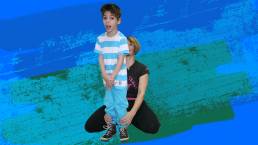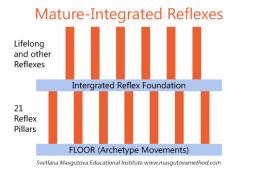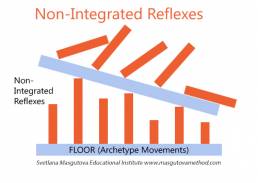Straightening the body – one of archetype reflex movements - is the basis for the development of the Trunk Extension reflex and the spinal Perez reflex. Later, as controlled, intentional movements develop, it will be the movement that allows us to reach the book from the shelf.
Based on extensive research and many years of experience, Dr. Masgutova came to the conclusion that certain psychomotor disorders in children and adults are directly related to the slow development of primary movement patterns (archetype movements).
Many individuals between the ages of 4 and 15 have poor concentration and memory which correlates with the poorly developed “Core flexion-extension” archetype movements and impaired axial rotation.

People with diagnosed attention deficit disorder and impaired abstract thinking have a poorly developed Trunk Extension archetypal movement. Poor manual dexterity skills are associated with the poor development of homologous archetypal movements.
Archetype movements
ARCHETYPICAL MOVEMENTS ARE GLOBAL, GENERALIZED MOTOR PATTERNS IN OUR MOTOR SYSTEM.
They represent genetically determined movements. They develop in a precisely determined order while still in the mother’s womb.
Properly developed movements lay a good foundation for the development of primitive reflexes.

If archetype movements are not developed appropriately, primitive reflexes cannot develop normally.
